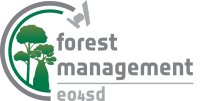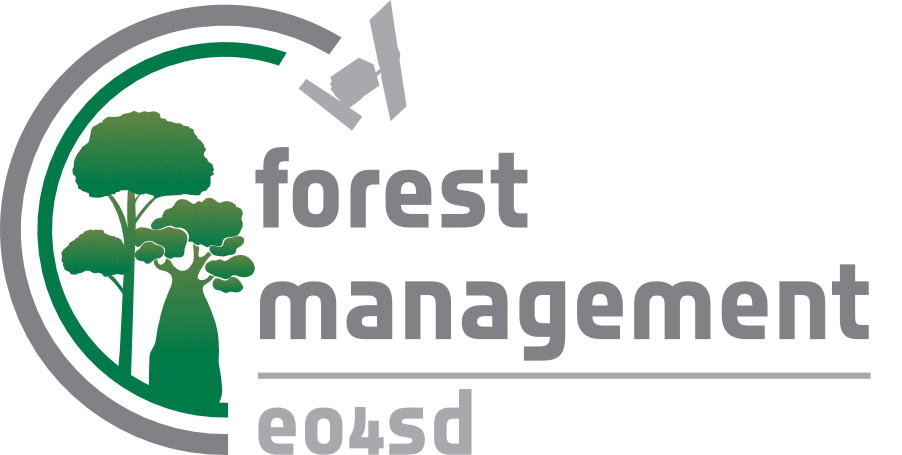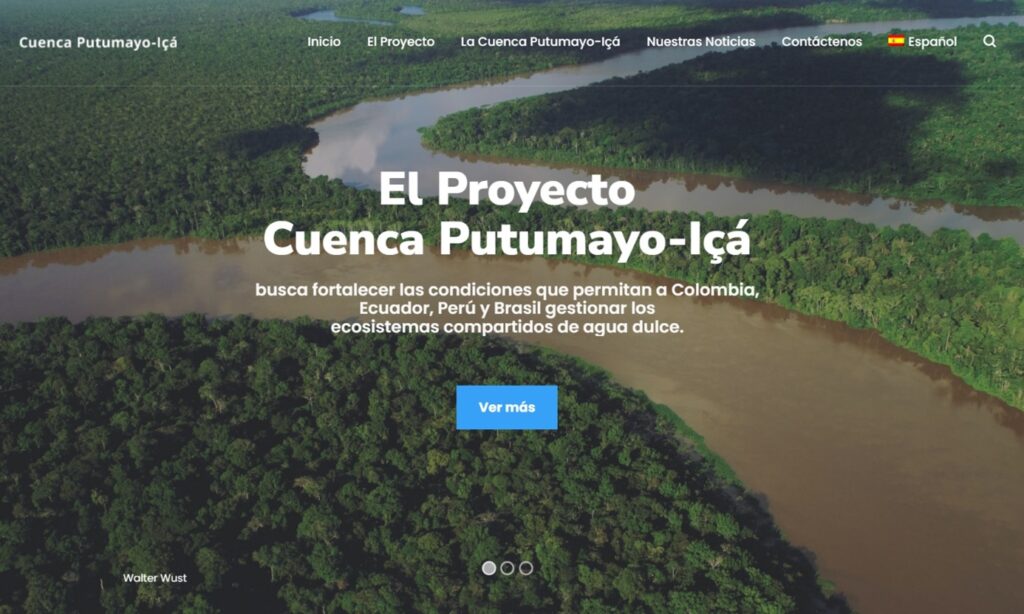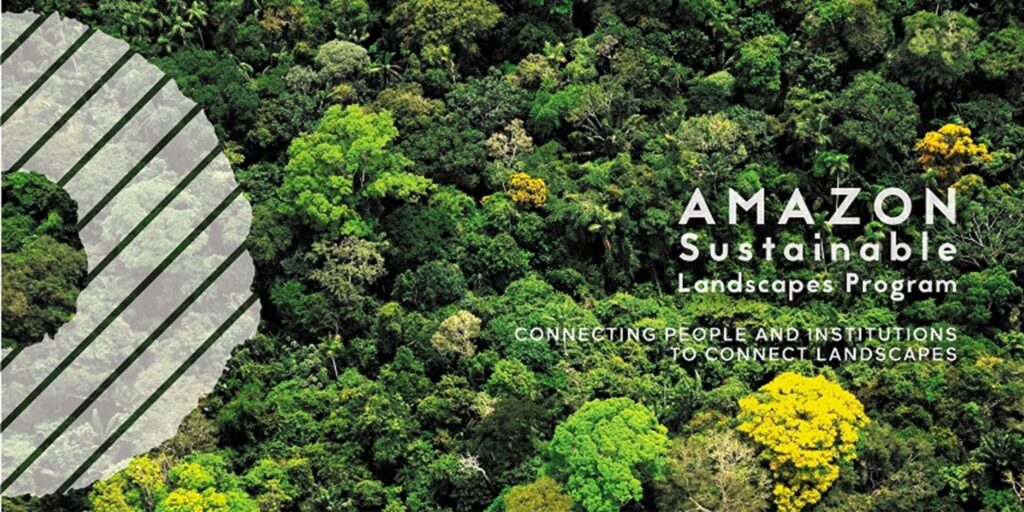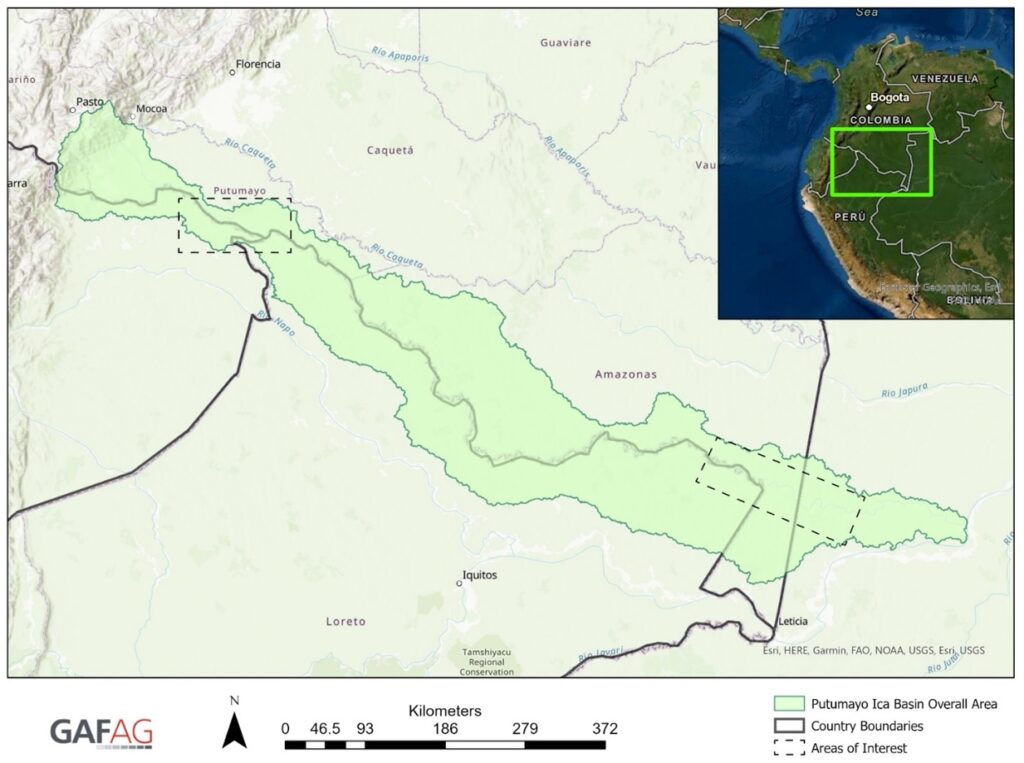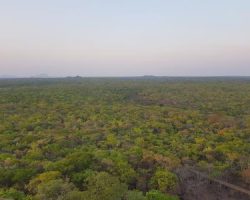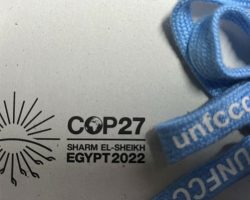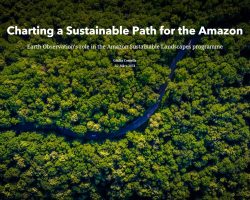Compiled: E. Caballero Mansilla and D. Requena Suarez
Recently, the EO4SD Forest Management Consortium had the opportunity to participate in a Regional Virtual Workshop held in Bogotá city, on 16th February. The collaboration between the World Bank (WB) Global Environment Facility (GEF)-supported Putumayo-Iça River Basin Integrated Watershed Management (IWRM Putamayo-Iça) project made this possible, allowing the Consortium to make a valuable contribution to the event.
The IWRM Putumayo-Iça project (see Figure1) aims to promote integrated freshwater resources management in the Putumayo-Içá River Basin, located across Colombia, Ecuador, Peru and Brazil. The five-year initiative is being led by the Environmental Ministries of these countries (Ministry of Environment and Sustainable Development of Colombia, Ministry of Environment, Water and Ecological Transition of Ecuador, Ministry of Environment of Peru, and the Secretariat of Environment of the State of Amazonas in Brazil), with the WB overseeing the project. The regional implementation of the project is being carried out by the Wildlife Conservation Society-WCS.
The EO4SD Forest Management Consortium had the perfect opportunity to showcase their geospatial products and the upcoming capacity building activities for Phase 2 during the Workshop on February 16th. The timing was ideal for engaging with regional entities and sharing their vision for sustainable forest management in the Putamayo-Iça River Basin.
The Consortium has made it their mission to support the IWRM Putumayo-Iça community by demonstrating the utility and benefit of mainstreaming EO-based forest related products. During the Workshop, the Consortium went beyond just presenting their suit of products: they also provided technical details, including brief technical descriptions, demonstration areas (see Figure 3), and the mapped years.
Additionally, the Capacity Building Plan and Training Activities were shared, extending an invitation to attend upcoming webinars and workshops to all those who wish to enhance their knowledge and skills in sustainable forest management.
The strength of EO-based products lies in their ability to support the implementation of projects especially in remote regions as well as supporting communities to address resource challenges. The wide coverage of EO data, the variety and quality of data, along with the speed of acquisition, consistency over time and affordability, make it easier for Project managers, like those of the Putumayo-Iça IWRM project, to monitor vast and remote territories with limited budgets and staff. By leveraging these products, the Consortium is helping decision-makers overcome obstacles and make more informed decisions for sustainable resource management.
